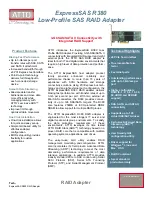
74
26. What is WMM Power Save?
WMM Power Save is a set of features for Wi-Fi networks that increase the efficiency
and flexibility of data transmission in order to conserve power. WMM Power Save has
been optimized for mobile devices running latency-sensitive applications such as
voice, audio, or video, but can benefit any Wi-Fi device. WMM Power Save uses
mechanisms included in the IEEE 802.11e standard and is an enhancement of IEEE
802.11 legacy power save. With WMM Power Save, the same amount of data can be
transmitted in a shorter time while allowing the Wi-Fi device to remain longer in a
low-
power “dozing” state.
27. What is GI?
GI stands for Guard Interval. It‟s a measure to protect wireless devices from cross-
interference. If there are two wireless devices using the same or near channel, and
they are close enough, radio interference will occur and reduce the radio resource
usability.
28. What is STBC?
STBC stands for Space-Time Block Coding, which is a technique used to transfer
multiple copies of data by multiple antenna, to improve data transfer performance. By
using multiple antennas, not only data transfer rate is improved, but also the wireless
stability.
29. What is WPS?
WPS stands for Wi-Fi Protected Setup. It provides a simple way to establish
unencrypted or encrypted connections between wireless clients and access point
automatically. User can press a software or hardware button to activate WPS function,
and WPS-compatible wireless clients and access point will establish connection by
themselves. There are two types of WPS: PBC (Push-Button Configuration) and PIN
code.




































